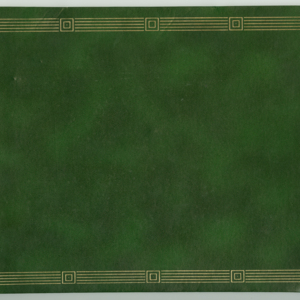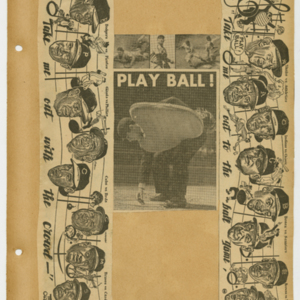Browse Exhibits (16 total)
Fisk Postcard Exhibit
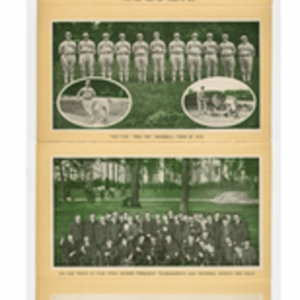
The 1919 Fisk Park commemorative postcards set contains numerous post cards with photographs showing the Fisk Tire Company Athletic Association in action at Fisk Park. The park was located in Chicopee, Massachusetts and was the social hub of most of the activities of the Fisk Athletic Association during the Spring and Summer seasons. Sporting activities included baseball, track, tennis, boxing, handball and a crew team. Social activities included picnics, dances on Friday nights, band concerts, fire works displays and events for children and families.
The Athletic Association was a popular and important benefit for the Fisk Tire Company’s employees in 1918 -1920. The association provided opportunities outside of the work week for employees and their families to have activities on the weekends. It was also a way to promote factory unity and comradery among workers. A summery of the week’s events and results of the interdepartmental sporting leagues were reported in the Fisk Bulletin, a weekly publication produced by the Athletic Association and the Fisk Tire Company.
Scrapbook of the Operation Little Vittles Committee
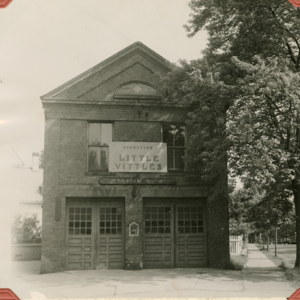
Operation Little Vittles was a goodwill mission to drop candy to German children during the Berlin Airlift of 1948-1949 and was headquartered in Chicopee, Massachusetts. This scrapbook is a record of the Operation Little Vittles Committee and provides information about the group of volunteers who were involved. The scrapbook contains official minutes of their meetings, the committee’s constitution and rules of operation, newspaper clippings, handwritten letters in German from children who received candy during the drops and a few photographs. The Little Vittles committee was responsible for coordinating and gathering candy and handkerchiefs to be delivered to Westover Air Force Base. From there the supplies were brought to Germany to be dropped to children in West Berlin.
Operation Little Vittles came out of the Berlin Airlift, an operation by the United States and England that brought food to the people of West Berlin during the Soviet Blockade of Germany. Little Vittles was started by Air Force Pilot Gail S. Halvorsen after he handed out candy to a group of children and saw their reaction to his gesture. On the next flight he dropped candy tied to handkerchief parachutes. This grew to regular drops of candy by Halvorsen and his crew. As news spread of the operation in the United States the Little Vittles Committee was formed to handle the volume of candy and handkerchief donations as well as bring the supplies to the air force base in Chicopee.
More information about the Berlin Airlift, Operation Little Vittles and Air Force Pilot Gail S. Halvorsen can be found at the Chicopee Public Library and through the library’s catalog.
Scrapbook of the 1938 Flood - Chicopee
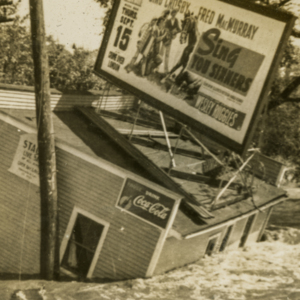
One of two scrapbooks by Tadesuz Chmura that show the devastation of the September 21, 1938 Hurricane and Flood in Chicopee.
Chmura was a water department employee for City of Chicopee and many of the snapshots give a unique perspective of the destruction and reconstruction of the bridges and dams through the following year.
Westover Air Force Base Post Engineer Scrapbook
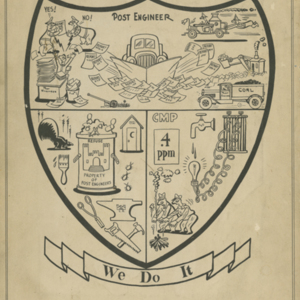
The WAFB Post Engineer scrapbook is a collection of newspaper articles and photographs created by Otto C. Kohler. Kohler was the head of the maintenance staff at Mount Holyoke College in 1940 and also a second lieutenant in the U.S. Army Engineers at Westover. He was one of the first officers to work at the base when development began in the summer of 1940, and Kohler worked specifically on the communications system being installed at the base. He returned to his job at Mount Holyoke in September 1940, but was back in uniform and assigned to the engineers at Westover by early 1942. He was promoted to captain and transferred to Boston in 1943 to be the head of the utilities branch and in charge of the Contract Termination Branch for the First Service Command. He was promoted to major in 1944 and received a special citation for his work before returning to his job at MHC in the fall of 1945.
The scrapbook contains materials related to Kohler’s time at Westover and also to his other duties during his service in the Army Corps. of Engineers. There are also newspaper articles and photographs of formal events by official Army photographers. A small number of more personal items and snap shots are also in the book. There is a series of photographs of two planes that had collided at the base showing damage to both planes. The scrapbook was donated to the Chicopee Public Library and Chicopee Archives Online by Kohler’s daughter Carol.
Scrapbook of the 300th Anniversary Celebration of the founding of Chicopee.
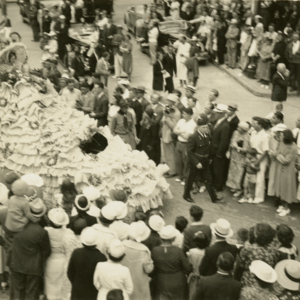
This scrapbook contains newspaper clippings and original snapshots by Tadesuz Chmura and documents Chicopee’s 300th anniversary celebration. Snapshots include the 300th anniversary parade through the center of Chicopee and events throughout the weekend of July 3rd and 4th, 1938. Also, each page has a newspaper article related to the snapshot and the event as a whole.
Tadesuz Chmura was a resident of Chicopee and was an employee of the City of Chicopee. He worked for the Water Department in 1938-1939. Chmura documented events in Chicopee by saving newspaper clippings and taking photographs. This is one of three scrapbooks created by Tadesuz and donated to the Chicopee Public Library and Chicopee Archives online by the Chmura family.
Patrick E. Bowe Nursery School
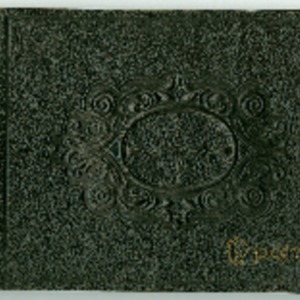
The Patrick E. Bowe Nursery School Scrapbook is a small collection of photographs displayed in twenty-two pages. The images are taken at various times from November 1935 to October 1938. The ages of the children range from 2 ½ to 4 years-of-age.
The Bowe School, built in 1924-1925, is located on Hampden Street in Chicopee, Massachusetts. It was built to relieve the congestion of the rapidly growing city and enable Chicopee to have a second more permanent school near the city’s center. The Bowe School was the first new elementary school built since 1910 and was considered very up to date for the time. It was set up as a voting precinct and had an assembly hall that was used for a variety of civic and social purposes. The school opened its doors on May 15, 1925 and in its first year had 689 students and 18 teachers. The first principal was Ms. Agnes Mulcahy.
The school was named after Patrick E. Bowe, a member of the school committee in Chicopee from 1888 to October, 1910. Bowe was born in Chicopee, went to school in the Chicopee schools and worked for the city up to 1889. He then became the clerk for the Ames Manufacturing Company of Chicopee and then in 1904 opened and operated his own grocery store on the corner of West Street and Center Street until his death on October 9, 1910.
Camp MacArthur
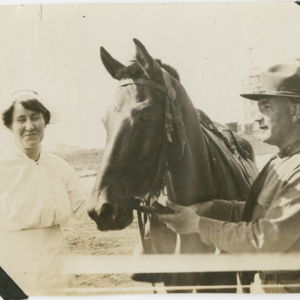
Camp MacArthur, named for Lt. General Arthur MacArthur Jr., Medal of Honor Recipient in the Civil War, was a military camp that was constructed on the shores of Lake Waco in Waco, Texas in 1917. The camp was designed to support the preparation of troops being sent to fight in Europe in World War I, and their relocation or demobilization when they returned from the fighting. Within the confines of the camp were administration offices, parade grounds, and a tent city that included wooden buildings for a base hospital, barns, supply warehouses, recreational facilities and mess halls. The camp also had the Red Cross Convalescent House where soldiers recovered from wounds, illnesses, and the effects of the Spanish Influenza outbreak that ultimately claimed the lives of over 20 percent of the soldiers who were afflicted. Camp MacArthur was located immediately adjacent to the already existing Rich Field Army Air Base. From September 1917 to March 1919, when the camp closed, more than 80,000 soldiers moved through the facilities, many of them from Wisconsin and Michigan with the 32nd Infantry Division of the National Guard, and from Texas, Arkansas, Missouri and New Mexico.
The Memories from Camp MacArthur, Waco, TX Scrapbook was created by Nurse Linda Cornelia Baker who provided care for the soldiers at the base hospital and the Red Cross Convalescent House. Ms. Baker, a descendant of one of the oldest families in Chicopee, was born on October 11, 1883. She lived her entire life in the Willimansett section of Chicopee, with the exception of her training to become a nurse, and the time she spent at Camp MacArthur. After World War I, Ms. Baker returned to Chicopee where she served her community as a “visiting nurse” specializing in communicable diseases with the Chicopee Board of Health until her retirement in 1953. She died on April 8, 1982 at the age of 98. Photographs in the collection cover the period of time she spent at Camp MacArthur, from March 1918 through the end of World War I.
Lt. General Arthur MacArthur Jr., was born in Chicopee Falls, Massachusetts on June 2, 1845. At the outbreak of the Civil War, MacArthur was living in Wisconsin. On August 4, 1862, at the age of 17, he was commissioned as a first lieutenant and appointed as adjutant of the 24th Wisconsin Volunteer Infantry Regiment, seeing action at Chickamauga, Stones River, Chattanooga and the Atlanta Campaign. At the Battle of Missionary Ridge on November 25, 1863, during the Chattanooga Campaign, the 18-year-old MacArthur inspired his regiment by seizing and planting the regimental flag on the crest of Missionary Ridge at a particularly critical moment in the fighting. For these actions, he was awarded the Medal of Honor. There is a Lt. General Arthur MacArthur Civil War Monument in Chicopee located on the intersection of Church Street and Broadway. Arthur’s son, General Douglas MacArthur, was a five-star General and played a prominent role in the Pacific Theater of World War II. He was also a Medal of Honor recipient for his service in the Philippines campaign during WWII. Arthur MacArthur Jr. and Douglas MacArthur were the first father and son to both be awarded the Medal of Honor.
Lewis Hine Exhibit (previously on display in the Chicopee Room)
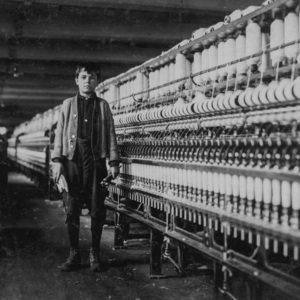
Lewis Wickes Hine
(September 26, 1874 – November 3, 1940)
was an American sociologist and photographer. Hine used his camera as a tool for social reform. His photographs were instrumental in changing child labor laws in the United States.
In 1908 Hine became the photographer for the National Child Labor Committee. Over the next decade, Hine documented child labor to aid the NCLC's lobbying efforts to end the practice. Hine's work for the NCLC was often dangerous. As a photographer, he was frequently threatened with violence or even death by factory police and foremen. At the time, the immorality of child labor was meant to be hidden from the public. Photography was not only prohibited but also posed a serious threat to the industry. To gain entry to the mills, mines and factories, Hine was forced to assume many guises. At times he was a fire inspector, postcard vendor, bible salesman, or even an industrial photographer making a record of factory machinery.
Hine spent the month of November, 1911 photographing the children who worked at Dwight Manufacturing Company in Chicopee. Images displayed at the Chicopee Public Library are selected from thirty-six images Hine took at the Dwight Mill. The full set of photographs is viewable at the Library of Congress and are part of the National Child Labor Committee Collection.
Historic Homes and Buildings (available through Mass Historical Commission)
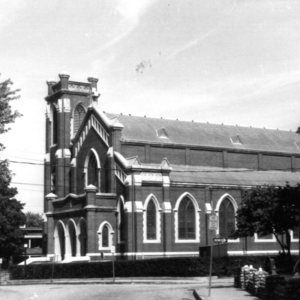
A survey of Chicopee was taken in the early 1980s by the Massachusetts Historical Commission to inventory the city's buildings, structures, and burial grounds. Each inventory includes an image, map sketch, short description, architectural significance and historical significance.
The images in this exhibit are just a few examples of what can be found in the Massachusetts Cultural Resource Information System (MACRIS). The MACRIS database allows you to search the Massachusetts Historical Commission database for information on historic properties and areas in the Commonwealth.
Users of the database should keep in mind that it does not include information on all historic properties and areas in Massachusetts, nor does it reflect all the information on file on historic properties and areas at the Massachusetts Historical Commission.
Chicopee Library Civil War Exhibit (exhibited in 2013)
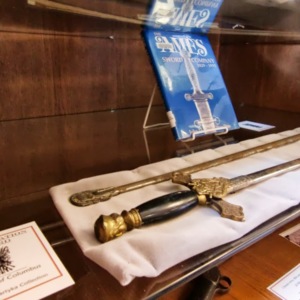
In 2013, the Library displayed a 10 case exhibit commemorating the 150th anniversary of the Battle of Gettysburg. The display focused on Chicopee's substantial role in the Civil War as one of "Lincoln's Arsenals". The men and women of Chicopee contributed to the Union's cause both on the battlefield and in the factories. On display are numerous swords forged by the Ames Manufacturing Company, leather accoutrements made by the Gaylord Manufacturing Company, and various memorabilia from the Civil War era. The exhibit was the result of a collaboration between the Chicopee Historical Society and the Chicopee Public Library with the intention of educating our community about Chicopee's rich local history and its citizens important contributions to one of the most substantial wars ever fought in North America. The exhibit is no longer on display but online images may still be viewed.
Roy Belliveau World War II Scrapbook (currently on display)
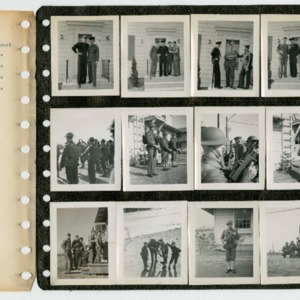
The scrapbook and photographs in this exhibit were taken by Roy Belliveau during his time in the army while serving abroad in Europe during World War II.
Postcard Exhibit (currently on display)
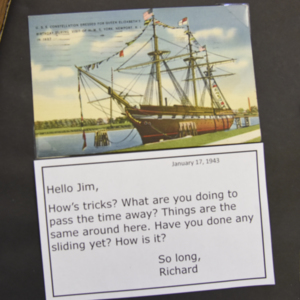
The Chicopee Public Library Postcard Collection Exhibit is a series of photographs showing the postcard exhibit as it is displayed at the Chicopee Public Library.
Charles H. Tracy, 1833-1911 (exhibited in 2013)
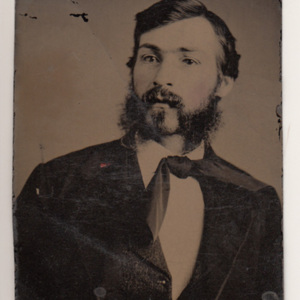
Charles H. Tracy received the Congressional Medal of Honor on November 19, 1887 for his service in the Civil War. Tracy was born in Jewett City, CT son of Albert L. Tracy and moved to Chicopee as a young man. In Chicopee he learned his trade as a Machinist for Ames Manufacturing Company. At the age of 29 on August 6, 1865, Charles H. Tracy enlisted for 3 years in the 37th Regiment, Co. A, Massachusetts Infantry Volunteers. He was mustered into the service on August 15, 1862.
Tracy was promoted to Sergeant shortly after his enlistment. In the engagment at Petersburgh on April 2, 1865, he was wounded and his right leg had to be amputated above the knee in a field hospital. He was promoted to a 2nd Lieutenancy May 17, 1865 but due to delays in the Massachusetts Adjutant General's office, he was never mustered in his new grade. He was discharged from service due to his wounds at Chester, Pennsylvania on July 4, 1865.
After the Civil War, Tracy returned to Chicopee where he was an active member in both the G.A.R., an organization of Civil War veterans, and Lodge of Odd Fellows. He was also Commander of the G.A.R. Post 103 in Chicopee. Charles H. Tracy died on September 13, 1911 and is buried in Chicopee's Fairview Cemetery.
Chicopee Factory Girls (exhibited in 2012)
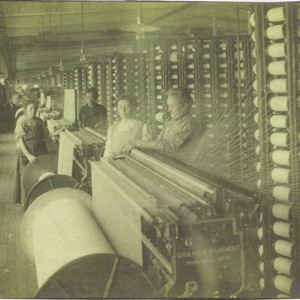
Local history books give credit for the industrial success of Chicopee to the men who established and invested in the various manufacturing companies in the city. Boston financiers were key to the development of Chicopee from an agricultural village into an industrial city with worldwide recognition as a manufacturing Mecca. Yet, the importance of the workers who made up the backbone of the industry’s workforce, especially the role of the female cotton factory workers is often overlooked. This section is meant to draw attention to The Factory Girls of Chicopee, Massachusetts in the early-mid 19th century.
